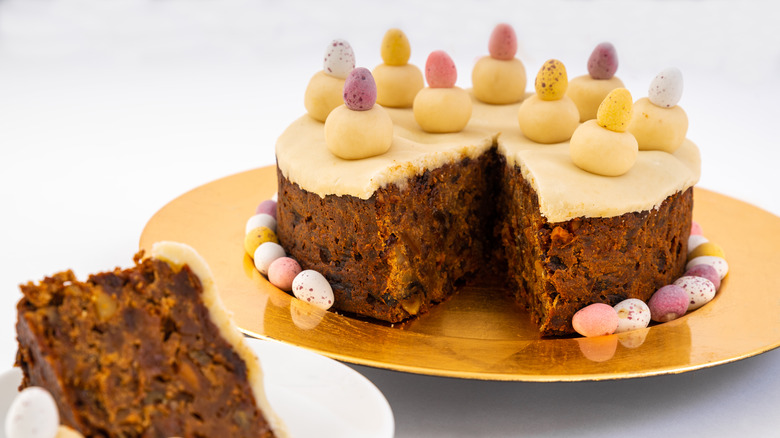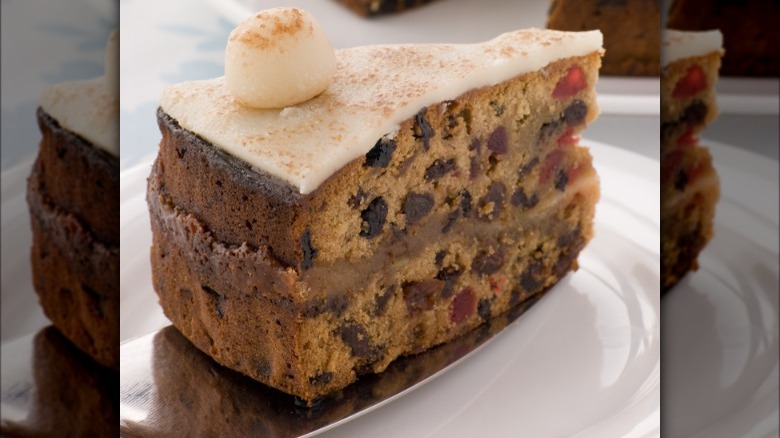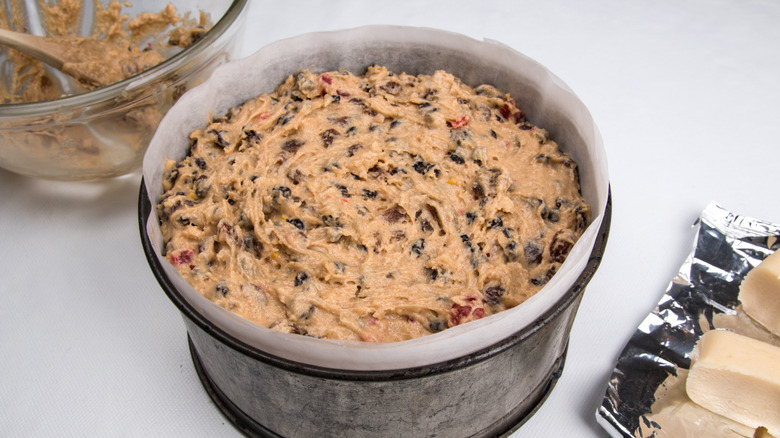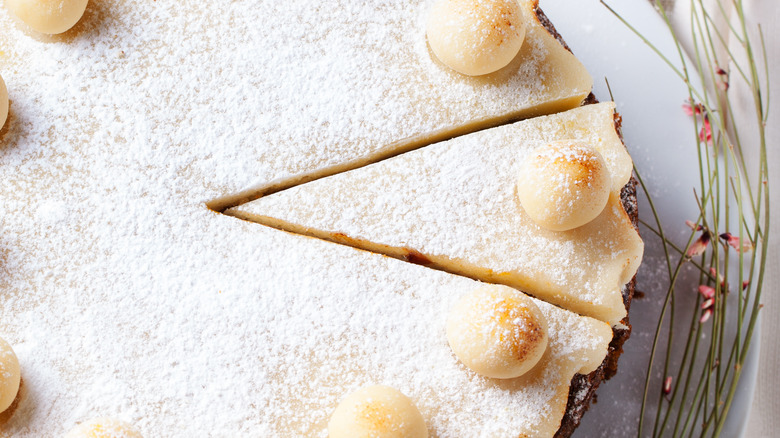Simnel Cake: The Sweet Treat Eaten In The UK To Celebrate Easter
If you're not a fan of fruit cakes, the light, spongy texture of Simnel cake might be the recipe that changes your mind. The well-known British cake is commonly baked and served each spring to be presented for Easter and Mother's Day holidays. And though Simnel cake has been enjoyed since the Middle Ages, the origins and history of this unique treat is a bit unclear.
Simnel cakes are lighter than the boozy holiday fruit cakes gifted during winter months. Decadent slices of Simnel are not only packed with a collection of dried fruits but the pieces are layered with chewy marzipan. Even the decorations found on top of Simnel cakes are thought to hold significance. Regardless of whether you want to bake a meaningful dessert or simply crave a sweet treat to accompany your morning cups of coffee, setting out to make a Simnel cake recipe can be well worth your culinary effort.
The origin of Simnel cakes
Historically, servants would bake a cake with any ingredients that needed to be used up before the start of Lent, a time of fasting and abstinence. Some would bring the baked treat home to share with their families, particularly on Mother's Day. The origins of the cake's name are less certain, however, with one tale attributing the recipe to an argument between Simon and Nell, a couple of bakers.
Wondering what to do with leftover ingredients and how to best honor spring, Simon wanted to boil dough to make a cake while Nell wanted to bake it; Sim-Nell was the result, a cake that was created by a combination of both boiling and baking. The Latin word for ground wheat flour is "simila," a more likely attribution for the cake's name, and Simnel bread was enjoyed as early as the 11th century in a recipe that long predates the holiday dessert.
Making Simnel cake
To make Simnel cake at home, use self-raising flour instead of the plain variety to help create a spongy, light texture. You'll want to introduce as much air as possible into your butter and sugar mixture, so beating the ingredients for several minutes will help build a fluffy base before carefully adding the flour.
The goal is to yield a light, not dense cake, and the assortment of fruits used in the batter will help keep your cake moist. Additionally, baking at lower temperatures for a longer period — around two hours — will preserve the perfect spongy texture.
While you can easily use the marzipan you've purchased from the store, you can also make your own at home. Many bakers will blowtorch the marzipan to create an aesthetic pop, but this isn't a necessary step in the baking process. Be sure the cake has cooled completely before you start to decorate.
Decorations with meaning
The decorations of Simnel cakes set this recipe apart from other seasonal treats. The decorations a baker chooses are said to have symbolic meaning, carrying either religious connotations or an acknowledgment of spring. When the cake is topped with balls of marzipan — most commonly 11 small orbs — these decorations are thought to represent the disciples of Jesus. (Though there were 12 disciples in total, the betrayer, Judas Iscariot, is left out of the cake's decor.) Some bakers decide to place a larger marzipan decoration in the middle of a cake in honor of Jesus himself.
For less religious bakers, cakes can be decorated with an assortment of seasonal flowers and spring blossoms as a nod to the new season. Though fresh flowers were once used as adornments, edible buds and petals made out of icing are commonly found embellishing the exterior of Simnel cakes. Toy animals like chickens or rabbits and colorful candy eggs can also add a splash of festive color and fun to these enjoyable servings of cake.



